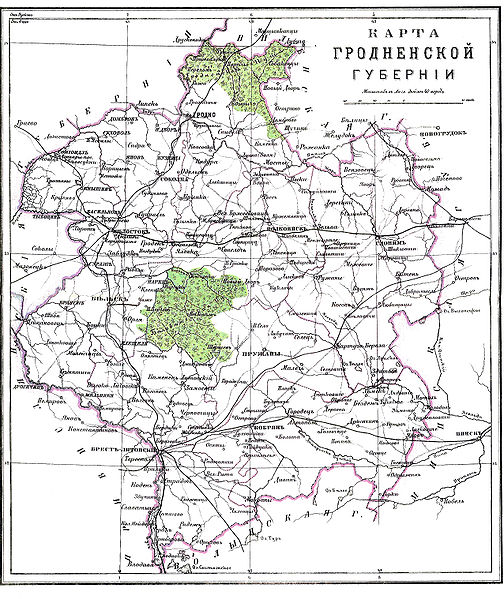The Supreme Commander of All German Forces in the East, also known by its German abbreviation as Ober Ost, was both a high-ranking position in the armed forces of the German Empire as well as the name given to the occupied territories on the German section of the Eastern Front of World War I, with the exception of Poland. It encompassed the former Russian governorates of Courland, Grodno, Vilna, Kovno and Suwałki. It was governed in succession by Paul von Hindenburg and Prince Leopold of Bavaria. It was abandoned after the end of World War I.
This is a 2 kopek coin (2 КОПѢЙКИ) from Ober Ost, 1916
Postage stamps from Ober Ost
Grodno Governorate was an administrative-territorial unit (guberniya) of the Northwestern Krai of the Russian Empire, with its capital in Grodno. It encompassed 38,671.5 square kilometres (14,931.1 sq mi) in area and consisted of a population of 1,631,645 inhabitants by 1897. Grodno Governorate bordered by Suwałki Governorate to the north, Vilna Governorate to the northeast, Minsk Governorate to the east, Volhynia Governorate to the south, Kholm Governorate to the west, and Łomża Governorate to the northwest. The governorate covered the areas of modern-day Grodno Region of Belarus, part of the Podlaskie Voivodeship of Poland, and a small part of Druskininkai, Lazdijai and Varėna districts of Lithuania.
Grodno Governorate (in Russian)



